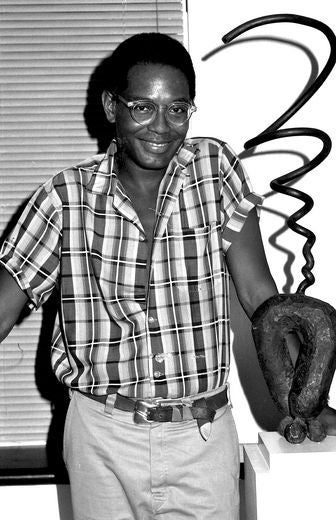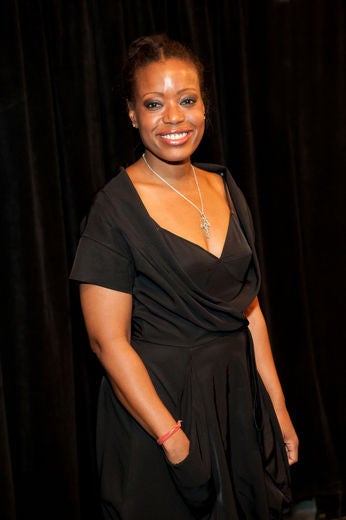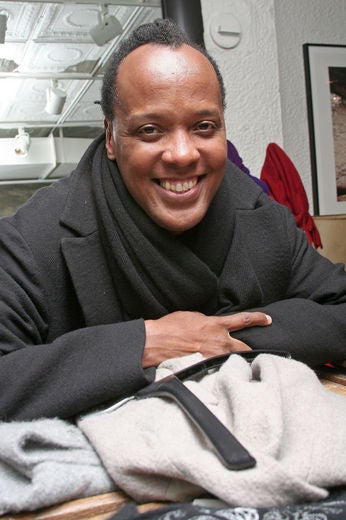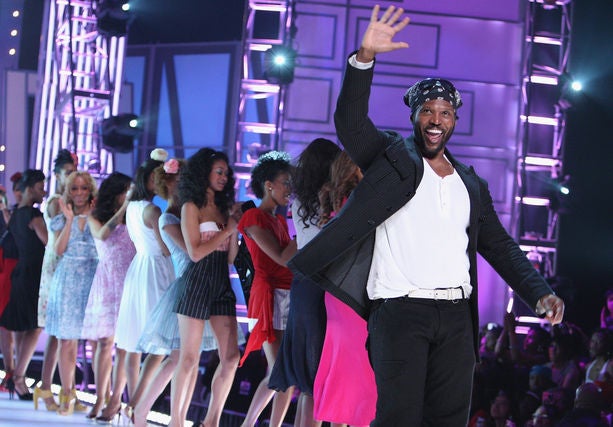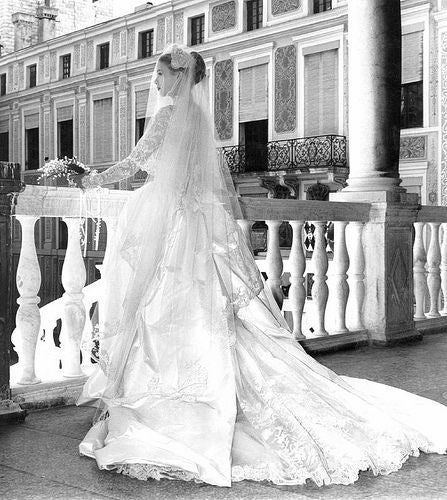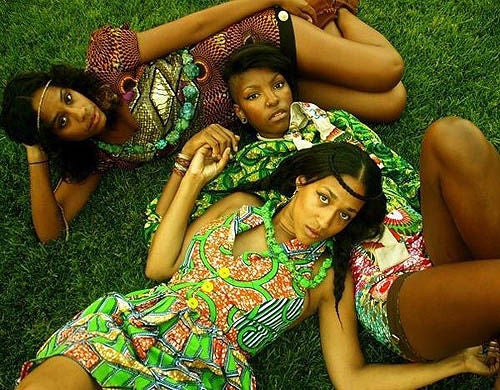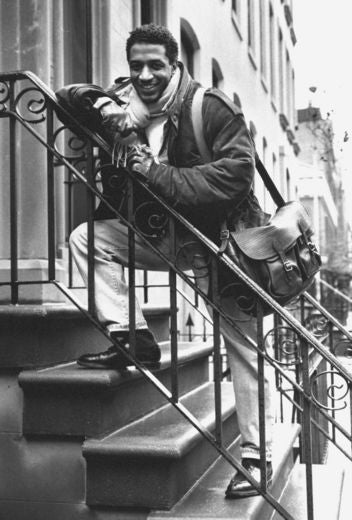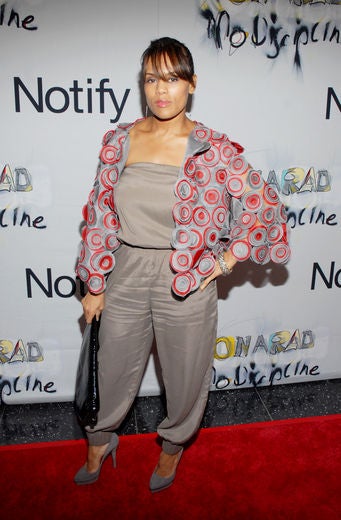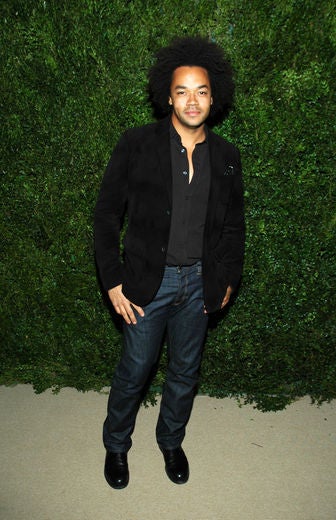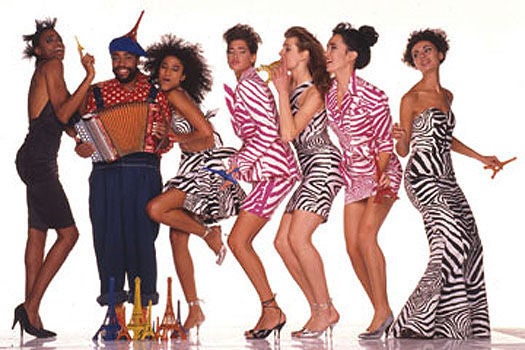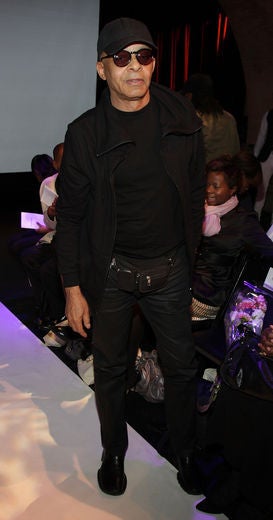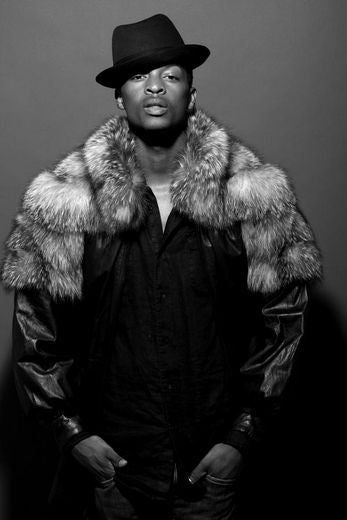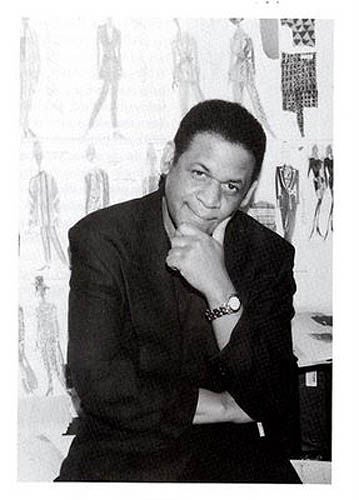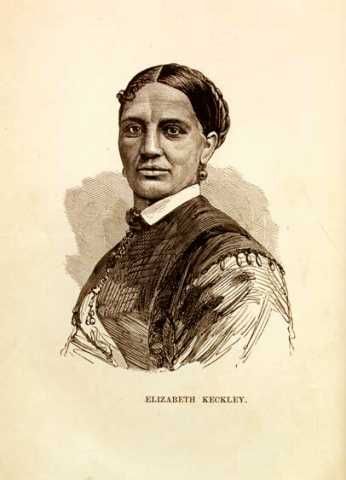We are paying homage to the great designers of the past, present and future whose unique perspective has helped shaped the fashion landscape.
Willi Smith was of the most successful, young designer in 70’s. At the time of his death, his label was racking in $25 million a year. His love of mix-matching unusual colors and prints broke all the fashion rules. Smith spent years designing for mass-produced companies before branching out on his own in 1976 with WilliWear. The line was cashing in $5 million a year in 1982. Smith branched out and turned to designing an equally critically acclaimed sportswear collection for men. He would go on to win the prestigious Cutty Sark Award for his exceptional menswear designs. Smith’s affordably chic designs would continue to be profitable up until he passed away in 1987 of AIDS related complications. He was only 39 years old.
Tracy Reese is one of the few Black designers with a successful business venture that extends beyond the runway. Along with two lines, Tracy Reese and lower-priced Plenty, Reese runs a home design line. A young Reese would go through many hurdles early on in her career before establishing her profitable brand. In 1986, Reese launched a line that was loved by women and critics, but her inexperience when it came to the business end forced her to close her doors only three years later. Marc Jacobs, Reese’s friend and Parson’s School of Design classmate, hired Reese when he was overseeing designs at Perry Ellis Portfolio. Her experience at Perry Ellis, coupled with the guidance of mentor Gordon Henderson, taught her what it takes to launch a successful line. Reese would try her luck again in 1996, and this time around Reese’s venture would flourish.
Reese is known for her signature brand of feminine, pretty dresses with intricate detailing and touch of vintage flair.
The man behind the moderately priced, stylish collection for Lafayette 148, Edward Wilkerson, has re-imagined the working woman’s wardrobe. Who says business attire must be dull or that stylish clothes must cost a bundle? Not Wilkerson, who counts Oprah and Queen Latifah as fans. He spent time designing at Calvin Klein, Donna Karan and Ann Klein before accepting the creative director position at Lafayette 178 in 1998. A lover of traveling, Wilkerson draws inspiration from his many voyages to Africa.
Byron Lars was the darling of the fashion world in the 1990’s. His 1991 collection of menswear-inspired women fashions were in high demand by luxury stores like Henri Bendel and Saks Fifth Avenue.The same year the industry’s leading trade magazine, Women’s Wear Daily, crowned him ‘Rookie of The Year.’ The San Fransisco native was celebrated for his ability to cut a silhouette that fits like a glove. His melding of deconstructed menswear and street wear drew inspiration from everything from baseball and aviation. The one signature design that marked Lars’s impressive career was his sexy, body-fitting men’s oxford shirtdresses. Success came fast for Lars, who went on to deliver winning collections for a number of seasons, but unfortunately a shady licensing deal in 1997 would put an abrupt end to his climb to the top. Lars’s high-end designs, to the dismay of Saks and Bendel, were being sold in outlet stores at significantly lower prices. While Lars won a lawsuit against the licensing company, his reputation as a high-end designer was tarnished. Despite having to shut down his company, Lars continued to show off his skills by designing a successful, African-American Barbie collection for Mattel. He also launched a comeback in 2000 with a line of shirts called Green T and he debuted his line of tailored women shirts under Beauty Mark in 2001. Lars is a constant source of inspiration for many new designers today.
Ann Lowe, the granddaughter of a slave and plantation owner, made history in 1953 when Jacqueline Bouvier wore an ivory, silk wedding dress designed by Lowe to marry John F Kennedy. Lowe comes from a line of Alabama dressmakers who catered to the elite. After she completed design school in New York, Lowe continued the family tradition by designing for New York’s wealthy and famous families which included the likes of the Rockefellers and DuPonts. Lowe was the creative mind behind the dress worn by Olivia de Havilland the night she won an Oscar for Best Actress in 1946. Despite her amazing talent, her race kept her from receiving any accolades. In fact, she was refereed to as “society’s best kept secret” since her clients would never admit to having their luxurious wears designed by a Black woman. The designs she created for major stores like Chez Sonia refused to include her name on the labels. A true fashion pioneer, Lowe was the first Black designer to open a salon in New York in 1950. Lowe would later run a salon inside Saks Fifth Avenue before glaucoma would force her to retire.
Inspired by Josephine Baker, the women of the Civil Rights and Black Panther movement, designer Maya Lake has given birth to a collection of vintage pieces in a sorbet of African prints called Boxing Kitten. Lake, who started designing at ten, constructs the kind of nostalgic silhouettes you’d see on a voluptuous secretary on “Mad Men,” if transported to Nigeria in the 70’s. The Pin-up girl jumpsuits and 1950’s sheaths are not for the wallflower, the vibrant prints are sure to have the wearer stand out among the ubiquitous sea of black. Which is why fashion daredevils like Erykah Badu, Solange Knowles and Jack of J*Davey all have been spotted stealing the spotlight in Boxing Kitten pieces.
As a young boy, Gordon Henderson was fascinated by fashion. He would sit and watch his mother sew dresses from Vogue patterns. From then on Henderson knew his future was in fashion. After graduating from Parson’s School of Design in 1981, he landed a job as an assistant at Calvin Klein. It was at Calvin Klein that Henderson would develop the simple, clean aesthetic that would win him a Perry Ellis Award for best new designer in 1990. Henderson’s goal was to create sophisticated pieces cut from affordable fabrics like linen and cotton twill. Making women’s life’s easier through fashion was very important to Henderson. He designed versatile, easy to wear, multi-purpose pieces for every occasion in a woman’s life. His modern approach to luxury and style won him full support from Saks Fifth Avenue. He was the first designer to gain financial backing from a large retailer. In 1992, he designed a line under his name exclusively for the upscale store.
At the White House event honoring Stevie Wonder, the legendary soul singer wasn’t the only one being recognized for his talents. His wife and designer, Kai Milla, received the biggest compliment any contemporary designer could hope for by having Michelle Obama wear one of her dresses.The First Lady chose a jade, silk chiffon, sleeveless dress with pleating. Milla, who designed her own prom dress in high school, was inspired to launch her line after watching a John Galliano runway show for Dior.
Milla’s own collection consists of sophisticated, wearable, sexy and fun pieces in rich fabrics and eye-catching colors. Milla boasts a slew of starlets as die-hard fans and her work has continuously won positive reviews. Looks like Stevie isn’t the only one with the Midas touch.
Patrick Robinson is the man responsible for injecting some much-needed cool factor back into The Gap. Robinson was hired as creative director in 2007 thanks to his keen understanding of American sportswear. He cultivated a fine eye for great design working at Perry Ellis and Ann Klein. Robinson, who launched a short-lived signature line in the 90’s, also spent some time at Giorgio Armani in Milan as a design director and as an artistic director at Paco Rabanne.
Patrick Kelly was a fashion trailblazer that paved the way for a number of Black designers who followed after him. Kelly was the toast of Paris when he arrived there in the late 80’s. Kelly’s dresses, which he sold on the streets of Paris, were a hit. Soon Bloomingdale’s and Henri Bendel were selling his outstanding, fun, colorful designs. The honors kept rolling in for the designer. Kelly was the first American to become a member of the ultra prestigious Chambre Syndicale du Pret-a-Porter (French’s governing fashion body). The French loved his use of color and prints.
Grace Jones and Cicely Tyson were loyal fans of Kelly’s infectious designs. Kelly’s reign on top would come to a sad end when he would lose his battle with AIDS in 1990. Kelly will always be remembered for his joyous designs and wonderfully cut fashions. Also, Kelly was instrumental in pushing issues of race to the forefront of the fashion world’s consciousness in the 80’s by using controversial images on some of his pieces to spark discussion.
One of the first African-American designers to gain world recognition, Stephen Burrows first came unto the scene as the leading designer for the rich and famous set of the Studio 54 era. Women fell head-over-heels for his sexy, matte jersey dresses with his famous “lettuce hem” in bright hues. Henri Bendel created Stephen Burrows World, an atelier devoted to designer’s wildly popular creations. Burrows’ talents were recognized in France where he was invited, alongside American designers Bill Blass, Halston and Anne Klein, to show his collection among French couturiers. The French were awed by his lively work and Burrows received glowing reviews. The designer was nominated for fashion’s highest honor, Coty Award, both in 1971 and 1972. Burrows was awarded with the award in 1973, 1974 and 1977.
After a twenty year hiatus from the fashion world in 1982, Burrows launched one of the biggest comeback in the industry in 2002 with a boutique back at Henri Bendel and his own collection. The iconic designer has been showing at Fashion Weeks ever since. Burrows, whose designs defined American fashion in the 70’s, was honored by the CFDA in 2006 with a special tribute award.It’s been 44 years since Burrows introduced his brand of fashion, and he still does jersey and color like no other.
21-year-old designer LaQuan Smith may not be a household name but his outrageous creations have been worn by two of today’s biggest stars and current fashion misfits: Rihanna and Lady Gaga. With friends like those, it’s impossible not to create a crazy buzz. This NYFW was Smith’s first time revealing his collection at fashion’s biggest event of the year. Smith’s statement, curve-hugging designs are heavy on the sex appeal and edge. Think tight, tube metallic dresses and vinyl harem cut jumpsuits. Expect big things from this soon-to-be fashion star.
Alvin Bell was only eight-years-old when he won a citywide drawing contest. His passion for drawing, coupled with his love and appreciation for fashion, would launch his career as an accomplished fashion illustrator. In addition, he worked as a photojournalist attending fashion shows. Bell would sketch his photos and sell them to designers. He put in some time as an illustrator for Ann Klein and Halston. Nevertheless, it was his designs of suits for P.S.I that would catapult Bell to stardom. Sears approached the designer in 1997 to create a line of separates geared towards African-American women called Mosaic.
Seamstress Elizabeth Keckley used fashion to buy her freedom from slavery. Keckley’s fine design skills won her a number of wealthy clients who loaned her money to secure her and her son’s freedom. Once free, she moved to Washington, D.C. That’s where Keckley would carve out a reputation for designing the most elegant dresses. This led to her getting introduced to First Lady Mary Todd Lincoln and subsequently designing all of the First Lady’s dresses. Kelly became head of the Department of Sewing and Domestic Science Arts at Wilberforce University in 1892. You can find her influential designs today at the Smithsonian’s American History Museum and Kent State’s University Costume Department Museum.
